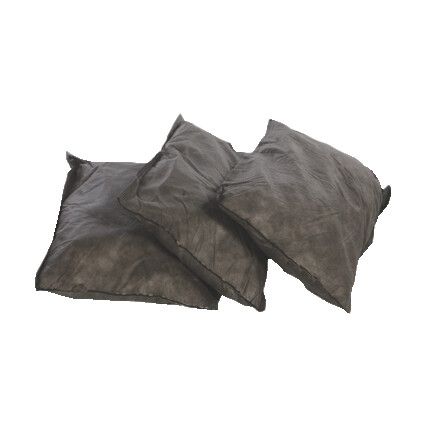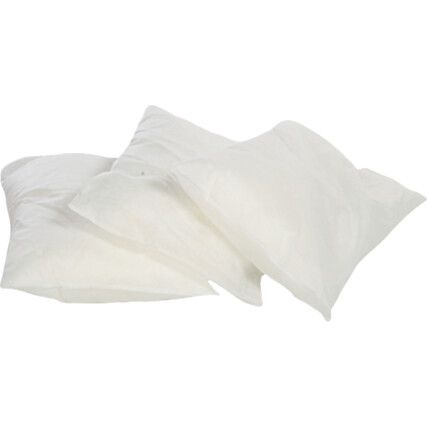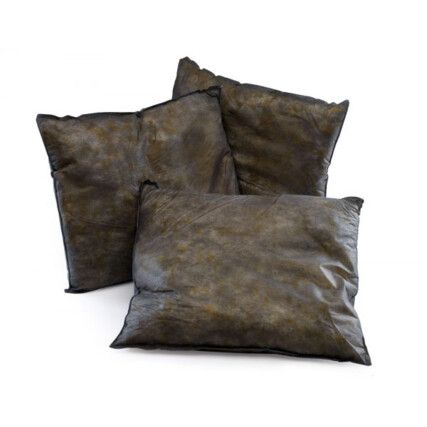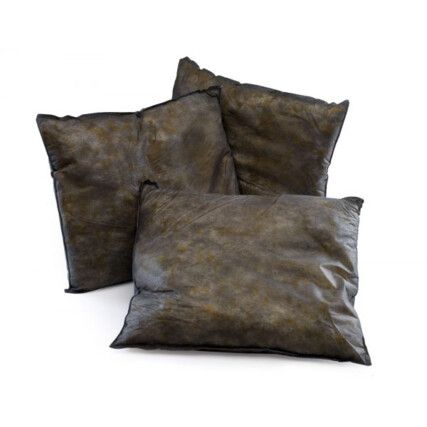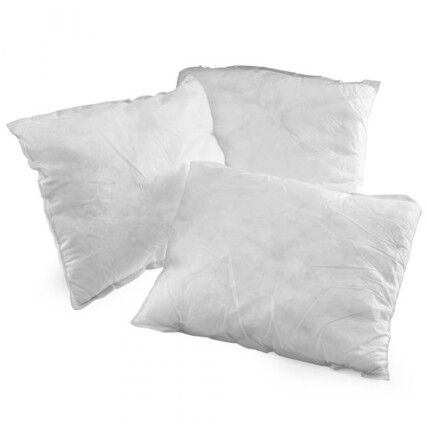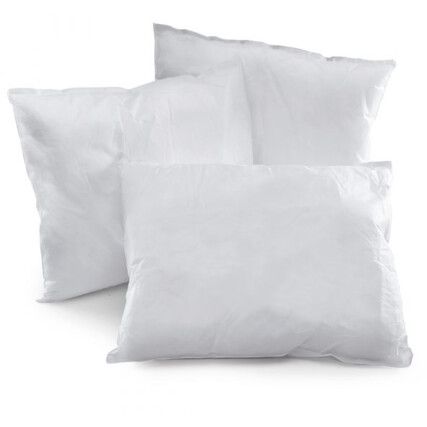Absorbent Pillows
Absorb and retain spills with absorbent pillows. Available in three variations, this type of spill control is designed for slow moving or stationary spills or leaks. For further information on Spill Control products, find more in our Spill Control Expert Guide.
Cromwell stocks a select range of absorbent pillows of different sizes, types and absorbent capacities to suit your needs. We source our stock from reputable brands, like Ecospill® and our exclusive brand, Solent®.
What are absorbent pillows?
Absorbent pillows are specialised spill containment products designed to effectively absorb and contain liquid spills in industrial, commercial, and household settings.
These pillows are typically rectangular or square-shaped and filled with absorbent material, such as polypropylene, cellulose, or recycled fibers, encased in a durable outer cover.
Why absorbent pillows?
Absorbent pillows are versatile spill containment tools. Their high absorbency capacity swiftly contains liquid spills, preventing further damage and hazards.
These pillows are strategically placed to target spills, offering quick absorption and minimising cleanup efforts. By swiftly containing spills, absorbent pillows enhance workplace safety by reducing slip hazards. Overall, they provide an efficient and effective solution for containing spills, protecting the environment, and maintaining safe working conditions.
The DEFRA Control of Pollution (Oil Storage) Regulations 2001 and the Environment Agency's Pollution Prevention Guideline 26 (section 7: Dealing with Spillages) lays out guidance and legislation for dealing with emergency spills as part of business safety management systems. This includes the use of containment and absorption to prevent spills from spreading to other areas.
When are absorbent pillows used?
Suitable for spillages ranging from small to large, the liquid can be either slow moving, stationary or fast moving for absorbent pillows to be effective.
It's important to note however, that with fast moving spills that risk polluting waterway, several spill control products should be used in conjunction with one another for maximum safety. For example using absorbent booms alongside absorbent pillows and rolls or pads to ensure all the liquid is retained. Absorbent granules can be used after the main bulk of the spill has been tidied up to ensure complete recovery of the liquid.
Types of absorbent pillows
There are three types of absorbent pillows to suit different spillage requirements.
Chemical Rolls: Formulated to safely absorb and neutralise hazardous chemical spills, such as acids, bases, and corrosive substances, these pillows help mitigate the risks associated with chemical spills by effectively containing and neutralising the spilled materials. These pillows are colour coded yellow.
Oil-Only Pillows: Specifically designed to absorb oils and hydrocarbons while repelling water, these pillows are ideal for cleaning up oil spills on land or water surfaces. They float on water, making them particularly useful for controlling oil spills in aquatic environments. They are colour coded white for ease.
Maintenance Pillows: These pillows are versatile and can absorb a wide range of liquids, including oils, water-based fluids, chemicals, and hazardous materials. They are suitable for general-purpose spill cleanup applications and are colour coded grey for ease of identification.
Considerations when choosing absorbent pads
• Absorbency capacity - Select pillows with a high absorbency capacity relative to the type and volume of liquids you expect to encounter. Higher absorbency allows for quicker containment and cleanup of spills.
• Compatibility - Ensure that the absorbent pillows are compatible with the types of liquids you are likely to encounter. Different absorbents may be better suited for specific types of spills, such as oils, chemicals, or water-based fluids.
• Environmental impact - Consider the environmental impact of the absorbent material, particularly if spills may occur in sensitive ecosystems or waterways. Choose environmentally friendly options that minimise ecological harm.
• Safety features - Look for absorbent pillows with safety features, such as fire-retardant properties, to enhance worker safety during spill cleanup operations.
• Size - Choose absorbent pillows in appropriate sizes and thicknesses for the intended application. Larger pillows are suitable for containing larger spill areas, while thicker pillows provide greater absorbency and durability.
Absorbent pillows jargon buster
We want to make it easy for you, so here are some key terms that will help you understand the range and applications a little better.
What does the safety standard BS 7959 mean?
BS 7959 is not as complicated to understand as it first appears and is relevant to the absorbent materials used for the control of liquid spillages.
Let's break it down...
• BS - This is the acronym for British Standards.
• 7959 - This is the assigned legislation number.
• 1 - This refers to the part of the written legislation relevant to the product, in this case, the sorbency (strength of absorption) of the materials (sorbents) used to control liquid spillages
• 2 - the determination of water repellence or buoyancy of hydrophobic (oil-only) absorbents
FAQs
How do you dispose of spill control products?
Used absorbent products must be disposed of in accordance with the absorbed liquid destruction regulation.
What does sorbent mean?
A sorbent is any ingredient used to absorb or adsorb a spillage.
What's the difference between absorb and adsorb?
To absorb is where one material soaks up another to combine. To adsorb is where one material sticks to the surface of another material, with both materials remaining separate.
